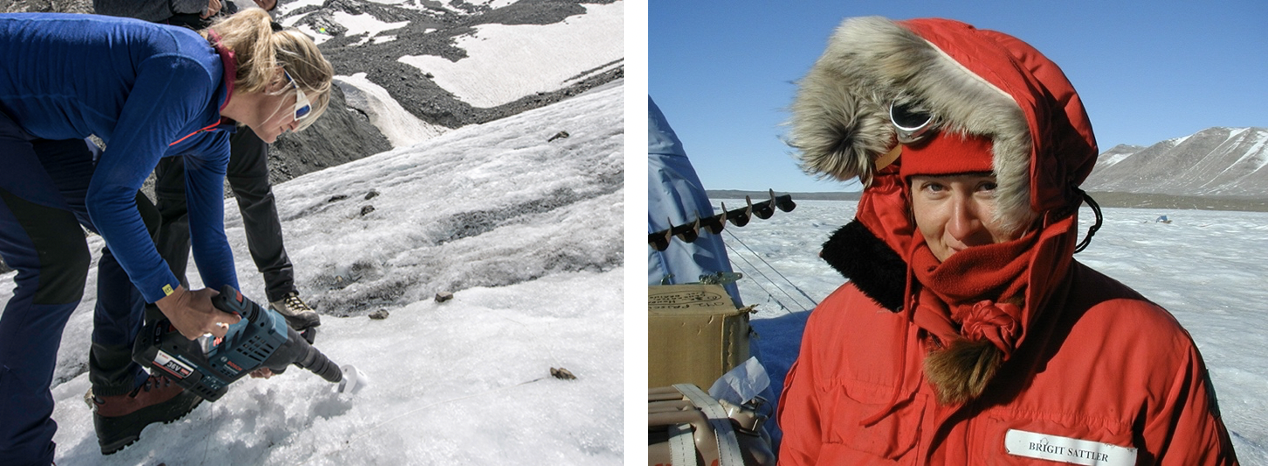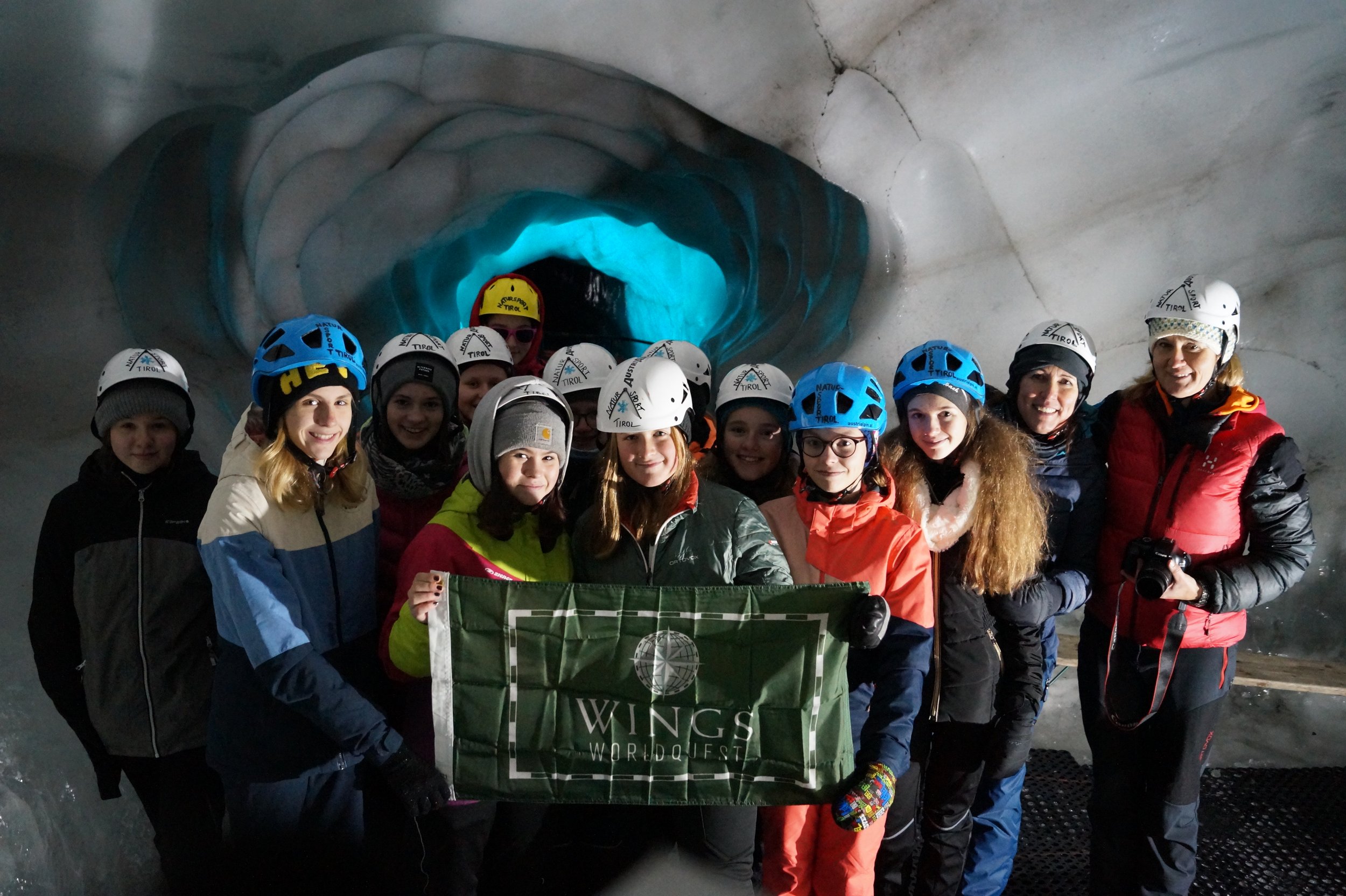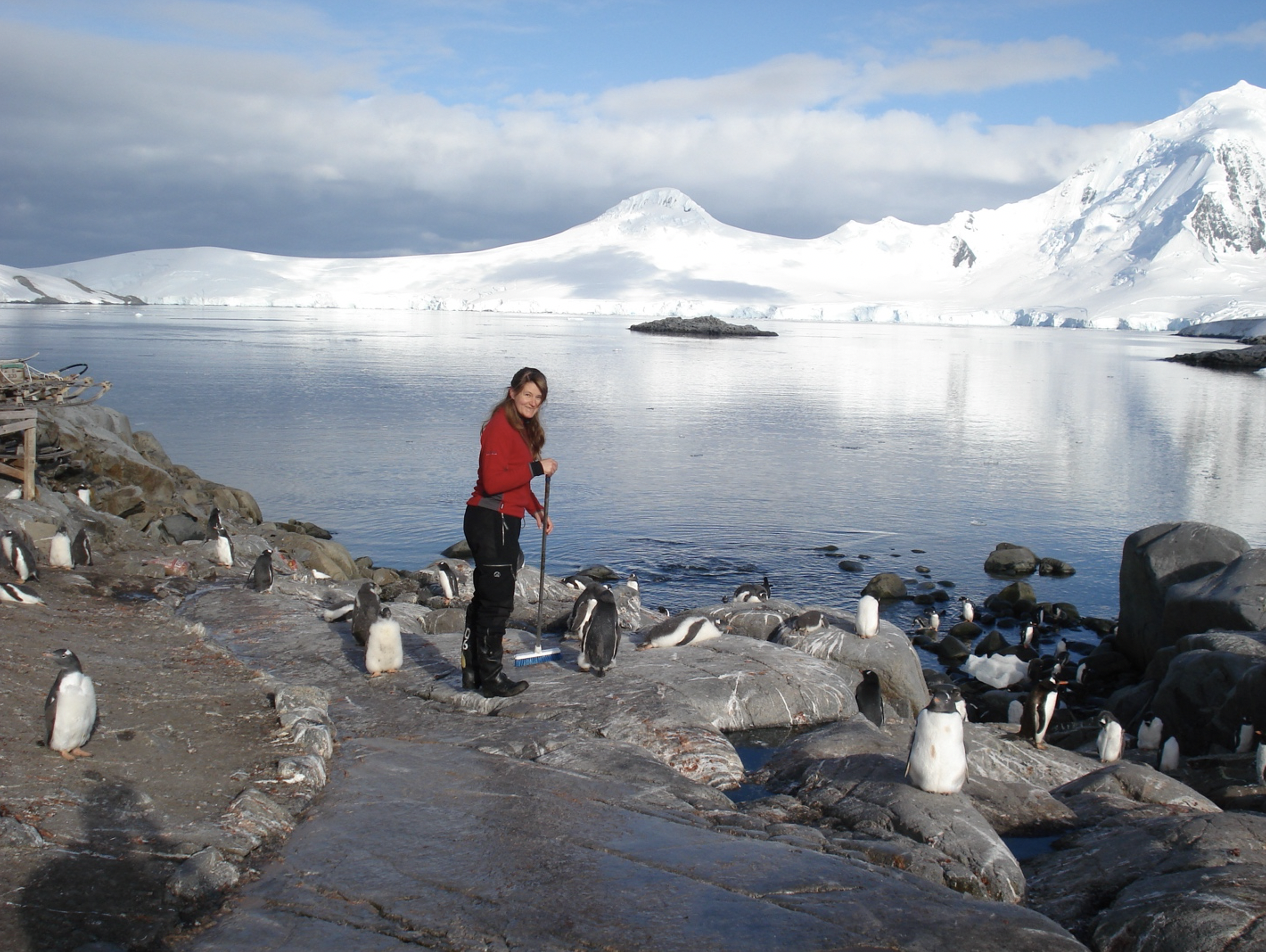Glacial microbiologist and ecologist Dr. Birgit Sattler won the WINGS Air & Space Award in 2008. Her early passion for polar exploration and adventure developed into a desire to learn everything about water – frozen or liquid – and enter the field of limnology (the study of bodies of fresh water) and the role of microbial ice life forms connected to our ecosystem and the food web. Now a faculty member at the Institute of Ecology at Austria’s University of Innsbruck and the Austrian Polar Research Group, she travels to polar and alpine regions to investigate glacier melt and the growth of algae and microbial colonies, despite inhospitable conditions, on the ice cover. She founded the Black Ice Project and other initiatives to measure the expansion and biological processes of these living organisms in the cryosphere. Her work helps us understand how fast glaciers are melting, the possibility of life forms in extreme conditions, and the challenges of a warming climate for water-dependent communities.

Courtesy of www.whiteframe-foto.com, Christine Foreman
WINGS WORLDQUEST: You won the WINGS WorldQuest Air & Space Award in 2008. Can you tell us about some of the highlights of your life and career since that time?
BIRGIT SATTLER: The WWQ Award was already a massive highlight in my life. It boosted my research and gave it more visibility. I was so lucky that I could proceed with more polar work, which has involved seven expeditions to Antarctica and 13 to the Arctic. This work resulted in the highest award in my country, the Cross of Merit of Tyrol. Other than that, we also focus on alpine issues, since it is our living space and facing lots of challenges.
WWQ: Can you catch us up on the work you’re currently doing?
BS: For one part we still focus on basic research where we try to understand the ecological role of microbes in the cryosphere. Now with climate change, millions of tons of biomass are released, and some of them are pathogens which are still viable. We want to understand the health risk and the abundance thereof. We also work on natural antibiotic resistances, which also occur in natural habitats in frozen realms.
One of our main foci right now is the issue of microplastic contamination in extremely vulnerable environments such as polar or high-altitude areas. The Plastic.Alps project brings together schools and citizen scientists to contribute to mapping and quantifying pollution in highly sensitive alpine locations. Believe it or not, microplastics might also be responsible for the expression of antibiotic resistances of bacteria. Here, the loop closes again. We also try this via a Citizen Science approach through a program called Sparkling Science, where kids of all ages are involved collecting samples from the ice and studying them back in their classrooms.
WWQ: What does a limnologist do? Can you tell us about your fascination with snow and ice, and what drew you to your field? What kind of skillset does the work require?
BS: A limnologist is dealing with freshwaters such as rivers, lakes, ponds. Frozen environments such as glaciers and ice covers also are topics for limnologists. I was always attracted by the sheer beauty of ice by being in the mountains since childhood. And I was wondering about tiny little critters such as microbes: What makes them better at survival in the cold compared to humans? As a skill, a lot of endurance is required. And passion. Never lose passion.

Dr. Birgit Sattler at Stubaier Glacier in Tirol, Austria, using a Kovacs Ice Corer to take samples to investigate the glacial microflora. (Courtesy of Lamm & Kubizka, bm:vit)
WWQ: What expedition/experience made the strongest impression on you and your work?
BS: One of the strongest impressions is not science-related but has more of a social aspect when you stick together for months in a tent where you cannot shower. It’s the impression of how reduced one is capable to live, with no big possessions, and how much seemingly important stuff is fading from your brain. Being on scientific expeditions brings you to the stuff which really matters to you. Taking it back to the real world might be the biggest challenge though. Regarding a science-related impression, it is still the fact that microbes can be revitalized even after being buried in ice for thousands of years. This still thrills me.
WWQ: How do you think the landscape for women working in the sciences has changed since you became a Fellow? Are women are still encountering the same obstacles?
BS: To be honest I never felt any obstacles as a woman. But maybe I was just lucky with my superiors, who were always supporting me and my research. However, I see more women coming into this field of science, which used to be more male-dominated.
WWQ: Has becoming a WINGS Fellow benefited or impacted you in any way?
BS: Yes, very much. This was such a milestone for me to see recognition across the pond. I benefited a lot from that. It gives you more trust in the research you are doing, and also more self-confidence. It has also attracted more female students to do their thesis with me. All in all, this award boosted so much, and I never want to miss this event, which I will cherish for life. It also gave me the trust that it was time to publish a manuscript that had been lingering in the drawer for such a long time. Now the book Eis.Leben (about Life in Ice) is out.
WWQ: Your advice on your 2008 WINGS Trading Card is “Follow your gut feelings and be yourself, in any way!” Now 14 years later, what additional advice do you have for women or young girls who want to be scientists and explorers? Please feel free to mention any of the postcards on your office door. Doesn’t one read, “Women need adventure”?
BS: I wonder where you have seen this postcard on my door, haha! But you are right, I absolutely love this quote. It actually says, “Women need more adventure.” But the advice I would like to give is still the same: Follow your gut feeling, regret what you have not done and, for things that went wrong, there should not be any regret since it is all adding up to life.
WWQ: Is there anything else you would like to add?
BS: Don´t take yourself too seriously on expeditions. Step back and never lose your sense of humor – by that, every obstacle can be solved. Plus: I could not have done this without the support of Jennifer Pritzker from the TAWANI Foundation – I am forever grateful for this chance of my lifetime.

Dr. Sattler takes young girls and school children into a glacier at 3.250m altitude, where they can enter a crevasse 30m below the surface, to experience how microbial life is teeming even under harsh conditions as part of her Black Ice research project. (Courtesy of www.whiteframe-photo.com)

Related:
- Birgit Sattler
- WINGS Fellow Lene Kielsen Holm’s “The Meaning of Ice” has won the 2014 Wilbur Mills Prize for Polar Non-Fiction by The Polar Libraries Colloquy
- WINGS Fellow Erin Pettit Invites Teenage Girls to Apply now for Girls on Ice 2011 Expedition:
- WINGS’ Flag Carrier Robin Bell finds surprises in Antarctic Ice